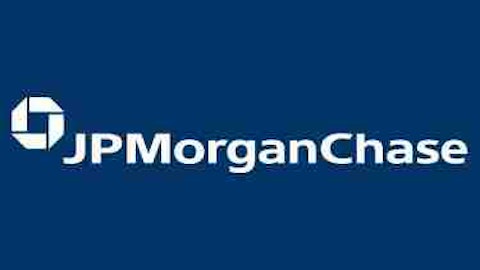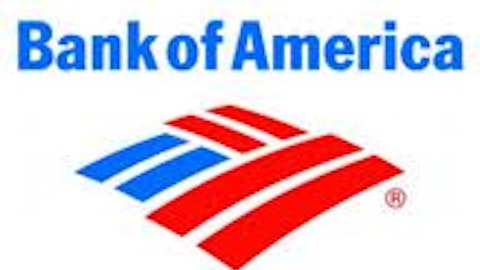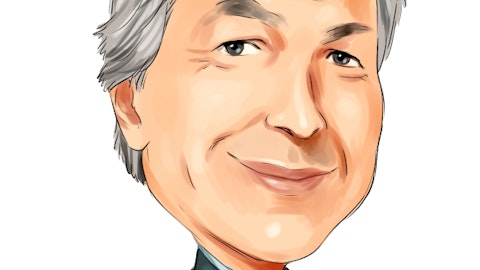Motley Fool analyst Matt Koppenheffer sits down with Rick Engdahl for a side-of-desk interview about banks. Are they really that hard to understand? Can the big banks be trusted? Join us for a discussion that sheds some light on banks from Citigroup Inc (NYSE:C) to Wells Fargo & Co (NYSE:WFC), as well as some of the smaller players.
Banks melted down in the crisis, then rebuilt; the next step is to achieve some forward motion. In this video segment, Matt explains how higher interest rates will be a pain point for banks in the short term, but are ultimately needed in order to increase demand for their services.
A full transcript follows the video.
Matt Koppenheffer: In terms of revenue, I think that’s sort of the next thing. What we looked at is we had 2008-2009, everybody melts down — or most everybody melts down — if you talk to Wells Fargo & Co (NYSE:WFC) they’ll say, “We weren’t even close,” but most everybody melts down.
Then from then, sort of until now — maybe a couple quarters before now — has been a rebuilding process. How did they rebuild the capital levels I’m talking about? How do we get the balance sheet safe again?
Now the next thing is, how do you propel the business forward? How do you grow loans? How do you build non-interest businesses? That’s been tricky. That’s been a tricky business, number one because the economy has been pretty sluggish, and number two because interest rates have been so low.
When I talk about half of the bank’s business is in the traditional core banking business — of taking deposits and lending them out — when you have the low interest rates the taking deposits, they don’t have to pay out very much on that. They pay barely anything on that. But that doesn’t move very much. That can’t move farther down, once you get near zero.
But what they collect on the loans, that has continued to move down, so the spread in between what they keep in profit, that continues to compress. That’s been a big headwind for banks.
When we think about the economy improving — that’s business activity improving, that’s unemployment going down — what we’ll have for the banks, and this is I think one of the key opportunities, it’s sort of a dual thing. Number one, there will be more demand for the loans they provide. That’s a good thing; they can bring more loans onto the books.
But, as the economy improves, we’ll see interest rates start to move back up. We’ve already started to see some of that. We saw it rather drastically through the first part of this year. That will happen, just in terms of expectations that rates will go up, but those expectations play off of …
You know, the Federal Reserve has been taking some pretty drastic action to keep interest rates low. Part of that has been keeping their core interest rate between 0 and 0.25%. Then, in addition to that, they’ve been buying Treasuries, and they’ve been buying mortgage bonds to try to keep those rates low. Eventually, they’re going to stop doing that as they see the economy start to improve.
They’re triggering that off of a combination of inflation — they want to see inflation stay under a given level — and then also unemployment. They want to see unemployment come down. It’s called the Fed’s “dual mandate.” The dual mandate is to keep prices stable and to keep employment at what they call a “full” level.
What they’re looking at right now is they want to see unemployment go down to below 6.5%. At that 6.5% level, the Fed will start thinking about changing its core rate. But before that happens, they’re going to start tailing off these mortgage bond purchases and these other security purchases, and that will allow interest rates to start to move up.
I think we’re seeing expectations that are pushing those rates up ahead of that, and that’s creating some short-term pain for banks because they hold a lot of fixed-income securities, and when rates go up, prices of fixed income securities go down. When you hold billions of dollars of those on your balance sheet that hurts, short term.
Longer term, though, the higher rates will lead to higher spreads, the better economy will lead to higher demand for services, and I think, bigger-picture, that’s where the banks want to see things going.
The article Higher Interest Rates: A Mixed Blessing for Banks originally appeared on Fool.com is written by Matt Koppenheffer.
Matt Koppenheffer has no position in any stocks mentioned. The Motley Fool recommends Wells Fargo. The Motley Fool owns shares of Citigroup and Wells Fargo.
Copyright © 1995 – 2013 The Motley Fool, LLC. All rights reserved. The Motley Fool has a disclosure policy.





